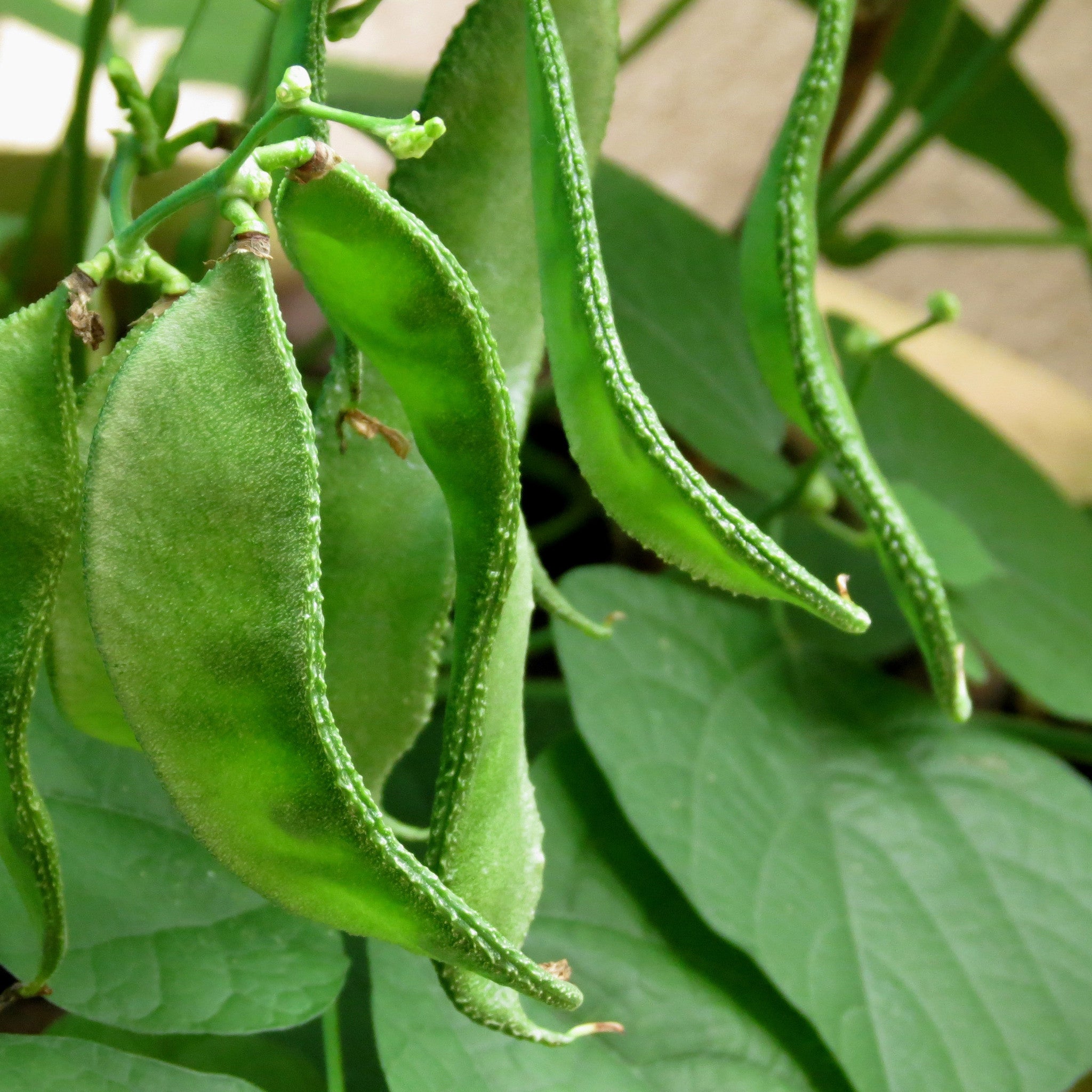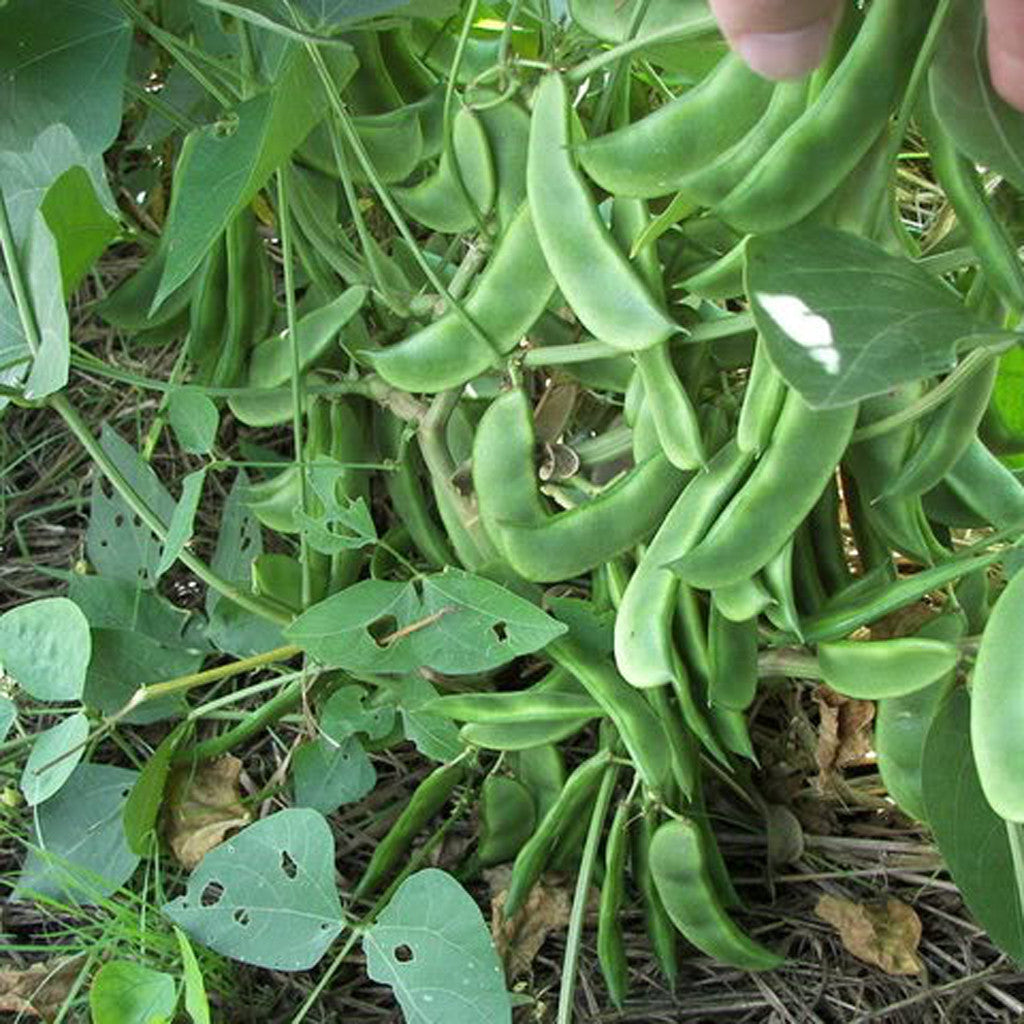Lablab purpureus
Family
Fabaceae
Origin
Africa & Asia
Description
Lablab purpureus is a bushy, or a climbing and branching, herbaceous, short-lived perennial plant that is often grown as an annual. It produces twining stems that can be 6 - 9 metres long. The plant has a well developed tap-root with many laterals and well developed adventitious roots.
The flowers are white to blue or purple in colour, about 1.5 cm long, typically papillonaceous in shape. Lablab fruits are linear, 4-15 cm long x 1-4 cm broad, smooth and beaked pods that contain between 2 and 8 seeds. Lablab seeds (beans) are ovoid, laterally compressed with a conspicuous linear hilum. Lablab beans are variable in colour, depending on variety or cultivar, usually white to dark brown, and some are black.
The plant is best known for its edible seed, though it also has an edible root, leaves, flowers and seedpods. In addition, it has a wide range of medicinal applications and can be used as a green manure. The plant is commonly cultivated, both in home gardens and commercially, in warm temperate to tropical climates for its edible seed, and is also occasionally grown as an ornamental.
It is suitable in intercropping systems where it is grown with maize, pearl millet and sorghum.When it is inter cropped, the seeds should be sown in well-spaced rows between maize or sorghum, and it should be sown at the same time or when maize is already 15 cm high.
Environment
Lablab requires a sunny position. It thrives in a wide range of soils, from poor sandy soils to heavy clays, when drainage is good. & a well-drained soil with a high organic matter content and a pH between 5.5 and 6.
Thanks to its taproot, lablab can extract water from 2 m below the soil surface, which makes it drought hardy and allows it to grow during the dry periods of the year. Lablab tolerates some flooding but does not withstand poor drainage or prolonged waterlogging.














